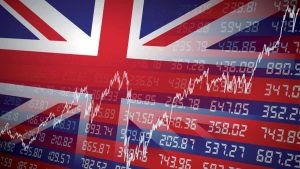There’s one thing that makes me suspect a stock’s decline might be over. It’s when a company reveals its biggest ever loss, and the price rises. That’s what happened to JD Wetherspoon (LSE: JDW) Friday, as it revealed a loss of £155m in the year ended 25 July. The share price? It gained 2.5% by early afternoon.
Results for the year to 25 July showed a 38% fall in like-for-like sales, with revenue down 39%. And that’s compared to a year that had already been blighted by the pandemic. The pre-tax loss of £155m, excluding exceptional items, is almost five times the equivalent figure of £34.1m from a year previously.
Losses per share, again before exceptionals, quadrupled to 110p. And it was no surprise to learn that there will again be no dividend.
Wetherspoon ended the year with net debt of £846m, up from £817m a year previously. That is around 60% of the company’s market cap. At least lenders have waived their covenants for another year. And the company had year-end liquidity of £240m.
JDW share price volatility
JDW shares have been on a strange trajectory so far in 2021, recovering strongly to a peak in April, but then falling all the way back again. Over the past 12 months, we’re looking at a 28% gain, thanks to a late 2020 spike. But over two years, taking in the pandemic period, the JD Wetherspoon share price is down 30%.
I have eyed up JD Wetherspoon more than once in the past. Could it provide a safe home for some of my retirement fund now? However the recent price chart looks, I’m only interested in the longer-term picture. And over the past five years, Wetherspoon has gained 13.5%. That looks like a significant underperformance compared to the FTSE 250, up 29% in the same timescale.
I think JDW shares got a bit overheated towards the end of 2019. It became the kind of stock that captures everyone’s imagination but is pushed a bit too high. Towards the end of that year, the JD Wetherspoon share price reached a trailing price-to-earnings multiple of 22.5.
Valuation a bit too high?
Now, that’s not a massive growth stock valuation by any means. But can an operator in such a highly competitive sector really justify a valuation that’s around 50% higher than its index’s long-term average? Especially when it’s paying dividends of only around 1%? I do think it was overvalued at the time.
On the current share price, though, things look different. Based on the same 2019 earnings per share figure, the P/E multiple comes down to 14. That seems like a more reasonable level to me. But wait, that old EPS figure is history now, so how can it have any validity? Well, with the current turmoil the only thing I can do is guess that Wetherspoon should be able to get back to 2019 levels of profit.
I’m convinced it can, even if perhaps not in the 2021-22 year. So will I buy? I do see a positive outlook for the JD Wetherspoon share price. But I’m sticking with my rule of not investing in companies carrying big debt.
Alan Oscroft has no position in any of the shares mentioned. The Motley Fool UK has no position in any of the shares mentioned. Views expressed on the companies mentioned in this article are those of the writer and therefore may differ from the official recommendations we make in our subscription services such as Share Advisor, Hidden Winners and Pro. Here at The Motley Fool we believe that considering a diverse range of insights makes us better investors.
This post was originally published on Motley Fool






